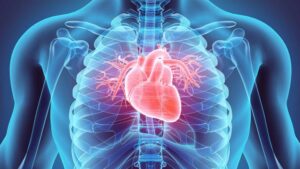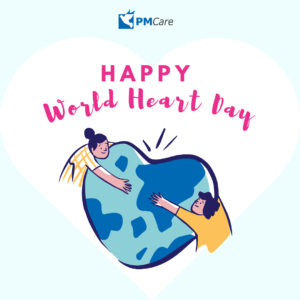WORLD HEART DAY
Do you know that annually, more than 4 million people died all across South East Asia from cardiovascular diseases (CVD) and cardiovascular related disease? CVD and cardiovascular related diseases are the number 1 killer, annually, in South East Asia, and worldwide alike.
Globally, there are more than 520 million people living with CVD, with millions requiring regular hospitalization from the illnesses itself or from the complication as sequelae of CVD. There are many causes, apart from stand-alone risk factor, that predisposes millions of people around the world to developing CVD and CVD sequelae, including smoking, underlying diabetes, hypertension, obesity, as well as environmental cause such as air pollution. Other acute and chronic illnesses can, medium and long term, results in CVD such as Chagas disease, amyloidosis, multiple sclerosis and nephrotic syndrome.

Cardiovascular Disease: Understanding Better
CVD, or more widely known as heart disease, is any illnesses that causes strain to the heart. It can either be caused by congenital or acquired anatomical defects, or diseases that affects the blood supply of the heart and to the heart.
In illnesses around the blood supply of the heart or to the heart; better known as coronary artery disease; the blood vessels can be affected either by narrowing of the vessels, thus leading to diminished blood supply. It can be caused by fibrosis, such as in Chagas disease and multiple sclerosis, or more commonly caused by plaques build up in the blood vessels that either partially or completely blocked the blood supply of the heart. This can lead to:
- Angina pectoris – Intermittent chest pain due to diminished blood supply
- Heart attack – Segments of the heart muscle died due to diminished, or no blood supply
- Heart failure – Inability of the heart to adequately contract to pump blood
- Arrythmia – Dysregulation of the rate or the rhythm of the heart
Risk Factor: Who’s More Likely to Develop Cardiovascular Diseases?
Apart from the underlying acute and chronic illness, there are other risk factors that can predispose one to developing CVD, such as:
- Age: Risk of developing heart disease raise proportionately with age
- Gender: Male at more at risk of developing CVD as compared to female
- Family history: Certain CVD are genetically linked
- Lifestyle & habit: People who lead a sedentary lifestyle as well as high risk behaviour such as illegal drug abuse
- Race & ethnicity: Certain race are more predisposed to developing CVD
Signs & Symptoms of Cardiovascular Disease
Signs & symptoms of CVD ca varies, according to age, type of diseases and severity of the diseases. However, the most commonly known symptoms of CVD are:
- Left sided chest pain in angina pectoris
- Shortness of breath
- Sweating (Diaphoresis)
- Unable to lie of a flat surface (Orthopnea)
- Sleep disturbance from inability to breath (Paroxysmal Nocturnal Dyspnoea)
- Dizziness & giddiness
- Fainting or feeling of fainting (Syncopal & Pre-syncopal attack)
What Can You Do?
In event of any emergency, immediately reach your local 999 for help. While waiting for local emergency response team to arrive, few things can be done to help the patient, by:
- Cardiopulmonary Resuscitation (CPR) – It is always best to equip yourself with the knowledge of basic life support such as CPR. Contact Yayasan Jantung Negara on how you can enroll for the course
- Stay with the patient until ambulance arrive
- Ensure that the patient can breathe as comfortable as they could
- If the patient has any emergency medicine with them such as aspirin or nitroglycerin, assist them in taking the medication
- Once the ambulance or the emergency response team arrive, help by describing the details of the attack that took place.
World Heart Day
In conjunction of the upcoming World Heart Day this 29th September 2023, which carries the theme ‘Use ♡ Know ♡’, the World Heart Federation (WHF) is inviting you join the cause and together, brave through to ever uphill battle against cardiovascular disease.
Through World Heart Day, the WHF aims to stop the world biggest killer through its global, multilingual campaign, by connecting the world, public & community health-workers to together work on better prevention, better diagnosis and provide better care for our heart and CVD patients. Together, we can take care of our beating heart by eating healthy diet, practicing healthy lifestyle and to avoid high-risk behavior of developing CVD.
Together, let’s raise awareness on the importance of taking care of the one heart that we have. Together, let’s take care of the need of those who live with CVD. Together, we use our heart, to know heart.


